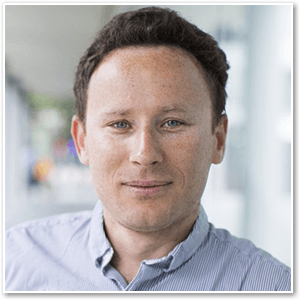ACS Photonics and SPIE, the international society for optics and photonics, are proud to announce Professor Igor Aharonovich, University of Technology Sydney (UTS), as the recipient of the 2023 ACS Photonics Young Investigator Award. This award honors the contributions of an early-career individual who is doing outstanding work in the research areas covered by ACS […]


Professor Igor Aharonovich received his PhD in 2010 from the University of Melbourne and spent two years in Harvard as a postdoctoral researcher in the group of Prof Evelyn Hu. In 2013 Igor returned to Australia and joined the University of Technology Sydney (UTS) where he is currently a full Professor and the UTS node director of the ARC Centre of Excellence for Transformative Meta-Optical Systems.
Igor’s group is focusing on exploring single emitters in wide band gap semiconductors, such as diamond and more recently hexagonal boron nitride. His group is also interested in innovative approaches for nanofabrication of nanophotonics devices for quantum circuitry. But most importantly—Igor’s group has members from 11 different countries which forms a vibrant and a dynamic environment.
Igor received numerous international awards and recognitions including the 2017 Pawsey medal from the Australian Academy of Science, 2019 CN Yang Award—which honors young researchers with prominent research achievements in physics in the Asia Pacific region—and the 2020 Kavli foundation early career lectureship in materials science. He was also elected as a Fellow of Optica (class 2021).
Read a brief interview with the 2023 ACS Photonics Young Investigator Award Winner, Professor Igor Aharonovich
Can you give us a short overview of the research you are currently undertaking?
Our group studies defects in wide band gap materials as potential qubits for future quantum technologies. These defects are excellent single photons sources and can operate even at room temperature without a necessity in cryogenic facilities.
Over the last few years, we became fascinated with a particular material—hexagonal boron nitride. It’s a unique van der Waals crystal as it possesses very large bandgap of ~ 6 eV, and hence hosts a large variety of single photon sources, but the key benefit is the ability to exfoliate this material into atomically thin monolayers using scotch tape. We are now working towards integrating these atomically thin layers containing quantum emitters, into scalable on chip quantum components—such as waveguides or photonic crystal cavities, and to employ them in quantum sensing applications.
What inspired you to pursue your area of research?
The main inspiration is always the combination of simplicity and seeing the unknown. When you work with single photon sources you essentially use conventional photonics to directly measure quantum effects and seeing single atoms! This is cool. The add-on benefit is the ability to control and manipulate light at the nanoscale. Single photon sources are one of the most fundamental components for quantum optics and nanophotonics, and combining it with new materials such as hexagonal boron nitride seems very exciting!
What’s one piece of advice you’d give to someone just entering the field?
Follow your curiosity and pursue your dream—perseverance is key! Ignore the hype and the noise, be creative and always look outside the box. Build a network around you, they will support and elevate you in tough times and will be with you to celebrate your achievements and success.